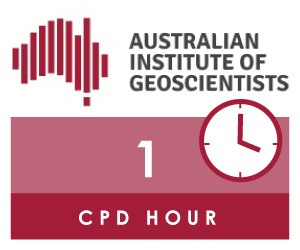| |
 The Centre for Exploration Targeting (CET) is pleased to invite AIG Members to a Guest Lecture in the CET Seminar Series given by Dr Ross Cayley: “The Lachlan Orocline of Eastern Australia. Revolutionizing the resource prospectivity game in Australia and globally”
The Centre for Exploration Targeting (CET) is pleased to invite AIG Members to a Guest Lecture in the CET Seminar Series given by Dr Ross Cayley: “The Lachlan Orocline of Eastern Australia. Revolutionizing the resource prospectivity game in Australia and globally”
Since the first applications of modern plate tectonic theory to Eastern Australia, the Lachlan Fold Belt (LFB) has been repeatedly interpreted as an unusually wide and squat, composite orogen, an amalgamation of multiple linear, orogen-parallel Early Paleozoic accretion or rifting events and multiple arc complexes, some developed independently, some simultaneously. However, modern structural and stratigraphic mapping, and aeromagnetic, gravity and deep seismic reflection data now constrains a new geodynamic model: a simple unifying solution for the whole LFB from far north Queensland to Tasmania. This model develops the idea that only one, continent-dipping, subduction zone was active in eastern Australia in the Ordovician-Early Devonian. Its formation involved continent-scale reorientations of the geology. The model effectively doubles the apparent LFB width, disrupting and redistributing any- and all- mineral systems formed within the orogen prior to 400Ma in the process. It is a brand new conceptual template for predicting the location of buried mineral systems in all of Australia’s eastern States – the global type-locality for a new geodynamic model that rethinks the lower mantle processes that drive continental collisions.
Ross Cayley is a structural and field geologist at the Geological Survey of Victoria (GSV). He is developing a radical new geodynamic model for the Australian continent for the Cambrian – Devonian. An overview of this work was incorporated as the global type-locality for a new geodynamic model for continent collision developed with Monash University research collaborators. Published recently in NATURE, this work has fundamental implications for terrane prospectivity analysis across Australia, and globally.
Venue: Woolnough Lecture Theatre (1.07), Geography and Geology Building University of Western Australia